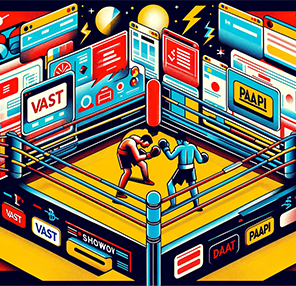Decoder
-
cookies
ID Bridging Explained: Benefits, Controversies, and the Battle for Transparency in Digital Advertising
Unfortunately, the buy side and sell sides are at odds again – what else is new in ad tech? The buy side called out publishers and their tech partners for using deceptive practices to identify audiences. The practice in question is a technique called ID bridging. ID bridging has become a contentious issue as digital advertising grapples with the deprecation of third-party cookies in Chrome.
-
AI
Why Advertising Standards and Certifications Matter in 2024
The proliferation of low-quality, Made For Advertising (MFA) sites threatens digital advertising’s integrity. To combat this, the industry must adhere to standards set by the Media Rating Council (MRC) and the Trustworthy Accountability Group (TAG). These certifications ensure transparency and trust, paving the way for a more reliable and sustainable ad ecosystem.
-
Decoder
Smarter Advertising: How Small and Medium Businesses Can Harness the Potential of Programmatic Buying
According to Statista, in 2023, global spending on programmatic advertising reached $558 billion. By 2026, this number will likely grow to $700 billion. Also, the share of programmatic advertising in digital spending worldwide has increased since 2020.
-
Behind the News
What is the CJPA, and How Will it Affect News Publishers?
The California Journalism Preservation Act (CJPA) aims to shake up online big tech operations. Under current regulations, these platforms are only required to submit terms of service reports occasionally. But if this bill passes, they’ll have to cough up monthly or quarterly cash to digital journalism providers proportional to how much advertising money they rake in.
-
Behind the News
What Is the American Privacy Rights Act (APRA) of 2024?
On April 7, 2024, Chairs Cathy McMorris Rodgers (R-WA) and Maria Cantwell (D-WA) jointly introduced The American Privacy Rights Act (APRA.) If passed, this legislative proposal would establish a federal privacy framework that would disrupt the current fragmented data privacy framework. APRA strongly emphasizes empowering American consumers with greater control over their personal information.
-
Decoder
Navigating the EU’s Rough Regulatory Seas: Understanding the DMA and DSA Impact on Digital Advertising
Nowadays, strategies for thriving in the ever-evolving world of digital media and digital advertising are more about navigating the complex seas of regulation than anything else. With the Digital Markets Act (DMA) and the Digital Services Act (DSA), the European Union is charting new territories — particularly following significant actions against tech titans like Apple, Google, and Meta.
-
AI
Will the EU AI Data Act Spur Federal Action in the US?
The EU AI Act is the world’s first comprehensive law regulating AI and Lawmakers in the European Parliament expect implementation by the end of the year. The law adopts a horizontal, risk-based approach applicable across various AI development sectors.
-
cookies
Privacy Sandbox: What’s Wrong With Video?
You all know about the back and forth this past month that started with the extensive report the IAB Tech Lab released criticizing Google’s Privacy Sandbox. Though in all the summaries and hot-takes, video still hasn’t been getting enough attention and it’s an area that needs the most work ahead of the Q3 deadline.
-
cookies
What are the Best Practices for Using Alternative IDs?
As the industry moves away from the use of third-party tracking cookies, there are several solutions taking shape to help target users while keeping their information secure. One of those solutions is alt IDs, which tend to befuddle even the most seasoned players. The most important thing right now in trying to solve the alt ID problem is not to recreate the cookie problem.
-
cookies
What Is the IAB Tech Lab’s Privacy Sandbox Demo Tool & How Does it Work?
The IAB Tech Lab’s Privacy Sandbox Demo Tool, donated by Index Exchange, was developed to showcase Protected Audience API (PAAPI), a component of Google’s Privacy Sandbox. Using the tool, any ad tech professional can run through a demonstration of PAAPI to see how user interest groups are created and how relevant ads can reach consumers without cookies.









